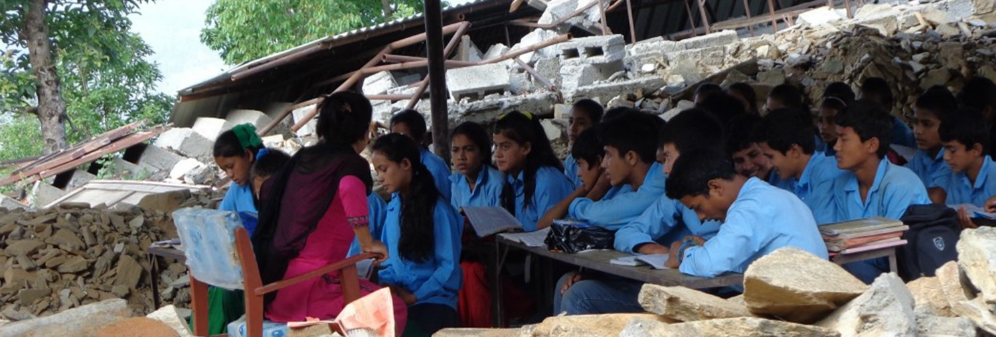Protecting Nepal’s next generation from earthquakes
The devastation caused by the 2015 earthquake was immense: 9,000 lives lost, 3.5 million people left homeless, and entire neighbourhoods flattened. How do we stop that happening again?
The challenge
While we can’t reduce the risk of earthquakes, we can improve our resilience to them. Collapsing buildings greatly increased the fatalities in 2015 and caused severe, long-term economic consequences.
The challenge for Nepal, and other low-to-middle income countries, is finding ways to make buildings more secure so that lives aren’t put at excessive risk and so that communities can recover more quickly and affordably.
What we’re doing
This landmark project draws on knowledge and experience from Nepal and around the world, incorporating earthquake, structural and geotechnical engineers, earth, social and computer scientists, seismologists, stakeholders and decision-makers. Together, we’re working to save lives by making buildings safer – starting with schools.
We’re using the University of Bristol’s seismic shaking table to see how replicas of Nepalese classrooms, strengthened using cost-effective techniques, perform under seismic excitation.
Based on this lab work, we’re developing a simple, state-of-the-art phone app that lets local engineers identify at-risk schools and make them safer.
One proven method of protecting new buildings in earthquake zones in wealthier countries is to rest them on sliding surfaces. It’s prohibitively expensive for many regions, but in Nepal, we’re using that principle to investigate low-cost, culturally acceptable, locally-sourced ways of co-producing a similar system.
All our research is supported by workshops and on-site training so, aided by our local and international partners, we’re leaving behind the skills and expertise for communities to rebuild Nepal safely.
How it helps
Our work provides diagnosis, testing and knowledge, but it’s also helping Nepal mitigate the risk of future earthquakes. We’re creating a framework that allows local decision-makers to plan for and react to another major earthquake and our collaboration will improve local design culture through new, safer, construction techniques that can be easily replicated by other countries.
Most importantly of all, we’re helping protect lives, especially the lives of the young learners who will shape Nepal’s future.
Related research centres
Partner organisations
- University of Southampton
- Arup International Development
- Save the Children
- University of Kathmandu, Nepal
- Tribhuvan University, Nepal
- National Society for Earthquake Technology, Nepal
- EISPD (Nepal)
- State University of New York at Buffalo, USA
- California Institute of Technology, USA
- University of Roma-Tre, Italy
- Fuzhou University, China
Further information
SAFER (Seismic Safety and Resilience of Schools in Nepal) project website
Global challenge research
We're tackling the world's biggest problems through collaboration and innovation.

